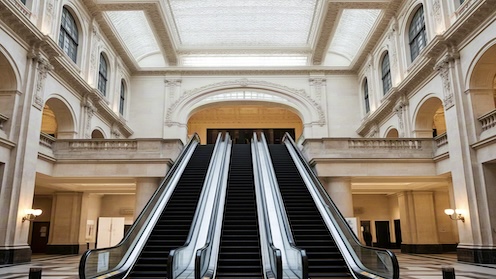In the first week of trial operation, the newly completed cultural venue encountered elevator problems: the entrance accessible elevator did not close tightly, operated slowly, the car was too small, and large exhibits could not be transported upstairs. The opening has been repeatedly postponed and the exhibition has been temporarily changed, which has had a huge impact.
Industry wide phenomenon
Similar situations are not uncommon. As the number of public cultural facilities increases, loopholes in elevator procurement also frequently emerge. Industry surveys show that about one-third of venues experience elevator malfunctions within one year of being put into use, mainly due to a lack of strict control in the procurement process.
Special needs overlooked
Compared to shopping malls, elevators in cultural venues not only carry people, but also transport exhibits and equipment. If the bidding documents only state vague indicators such as "load capacity of 1000 kilograms, speed of 1 meter/second" without specifying details such as exhibit volume, transportation frequency, door width, and height, it often leads to serious discrepancies between the elevator and actual needs.
Contradiction between low price and cost
Excessive pursuit of low prices in procurement also lays the foundation for future problems. Although cheap models save budget, they are difficult to meet standards for noise, leveling accuracy, and durability. In two or three years, maintenance costs may even exceed the funds saved initially, making it difficult to guarantee the quiet and stable experience pursued by cultural venues.
Insufficient architectural coordination
Elevators are not isolated equipment and need to be matched with the building structure, machine room layout, and fire protection system. In this project, due to insufficient construction communication, the clearance of the vertical shaft was reduced by several tens of millimeters compared to the drawings. The manufacturer had to make temporary modifications to the design, resulting in a delay in the project schedule and the emergence of operational hazards.
Expert advice
Industry experts remind that "customization+full cycle management" should be followed. The former requires clear usage scenarios such as exhibition layout, audience flow, and emergency evacuation in the early stages of the project; The latter requires a professional team to be involved in design, installation, acceptance, and maintenance to avoid temporary remedies.
summary
According to a survey conducted in 2024, most venues believe that elevator procurement should focus on "preliminary plan review" rather than simply competing on prices. Elevators are the "vertical arteries" of cultural venues, which are related to safety, experience, and long-term operation. Choosing the right elevator is not only a smooth opening, but also the cornerstone of stability and reputation for decades to come.

